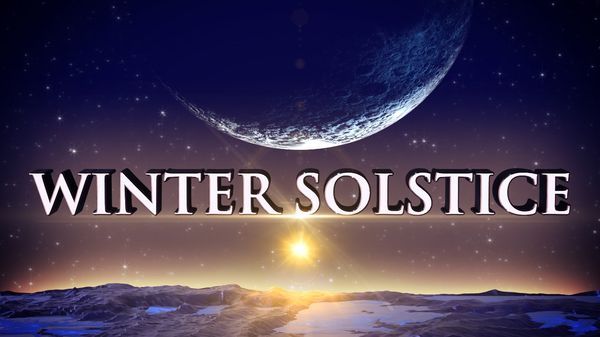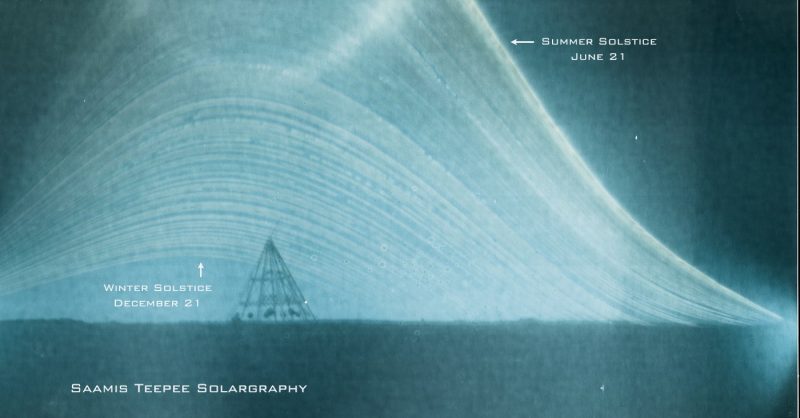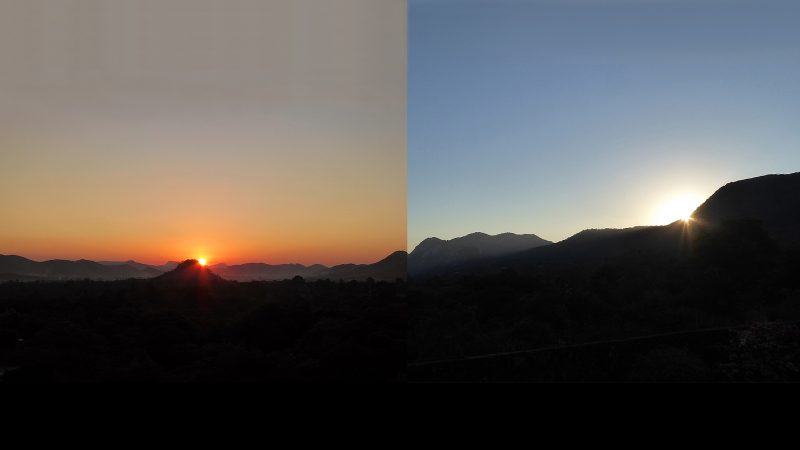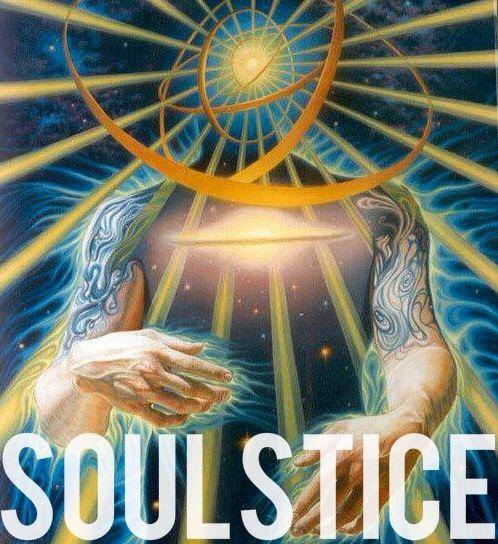
2022 December solstice: All you need to know
Posted by
Deborah Byrd
December 21, 2022

Satellite views of Earth on the solstices and equinoxes. From left to right, a June solstice, a September equinox, a December solstice and a March equinox. Read more about these images, which are via Robert Simmon (Sigma Space Corporation)/ NASA.
No matter where you live on Earth’s globe – no matter what time it happens for you – the solstice is your signal to celebrate seasonal change.
What is it? The December solstice marks the sun’s southernmost point in our sky for this year.
When is it? The December solstice is today, December 21, 2022, at 21:48 UTC (that is 3:48 p.m. in central North America).
Note: On this solstice, the sun will be overhead at noon as viewed from the Tropic of Capricorn. For us in the Northern Hemisphere, the December solstice will mark the longest nights and shortest days of the year. For the Southern Hemisphere, it will mark the shortest nights and longest days. After this solstice, the sun will move north again.
Available now! 2023 EarthSky lunar calendar. A unique and beautiful poster-sized calendar showing phases of the moon every night of the year. Makes a great gift!

View larger. | Ian Hennes in Medicine Hat, Alberta, Canada, created this solargraph between a June solstice and a December solstice. It shows the path of the sun during that time period. Thank you, Ian!

On the day of the December solstice, the sun takes its farthest pass south on the globe. Image via Jecowa/ Wikimedia Commons.
What is a solstice?
The earliest people on Earth knew that the sun’s path across the sky, the length of daylight, and the location of the sunrise and sunset all shifted in a regular way throughout the year. They built monuments such as Stonehenge in England and at Machu Picchu in Peru to follow the sun’s yearly progress.But today, we see the solstice differently. We can picture it from the vantage point of space, and we know that the solstice is an astronomical event. It’s caused by the tilt of Earth’s axis and by its orbital motion around the sun.
Earth doesn’t orbit upright. Instead, it’s tilted on its axis by 23 1/2 degrees. Through the year, this tilt causes Earth’s Northern and Southern Hemispheres trade places in receiving the sun’s light and warmth most directly. It’s this tilt, not our distance from the sun, that causes winter and summer. In fact, we’re closest to – not farthest from – the sun at the turn of every new year. But we in the Northern Hemisphere are moving into winter. That’s because the Northern Hemisphere leans farthest away from the sun for the year around this time.
The December solstice
At the December solstice, Earth is positioned so the sun stays below the North Pole’s horizon. As seen from the latitude 23 1/2 degrees south of the equator, at the imaginary line encircling the globe known as the Tropic of Capricorn, the sun shines directly overhead at noon. This is as far south as the sun ever gets, and all locations south of the equator have day lengths greater than 12 hours.Meanwhile, all locations north of the equator have day lengths shorter than 12 hours.
For us on the northern part of Earth, the shortest day comes at the solstice. After the December solstice, the days will get longer, and the nights shorter.
It’s a seasonal shift that nearly everyone notices.
Where should I look to see signs of the December solstice in nature?
Everywhere.For all of Earth’s creatures, nothing is so fundamental as the length of daylight. After all, the sun is the ultimate source of all light and warmth on Earth.
In the Northern Hemisphere, you’ll notice late dawns and early sunsets, the low arc of the sun across the sky each day, and how low the sun appears in the sky at local noon. Look at your noontime shadow, too. Around the time of the December solstice, it’s your longest noontime shadow of the year.
In the Southern Hemisphere, it’s opposite. Dawn comes early, dusk comes late, the sun is high, and it’s your shortest noontime shadow of the year.
Why doesn’t the earliest sunset come on the shortest day?
The December solstice marks the shortest day of the year in the Northern Hemisphere and longest day in the Southern Hemisphere. But the earliest sunset – or earliest sunrise if you’re south of the equator – happens before the December solstice.Instead of focusing on the time of sunset or sunrise, the key is in what is called true solar noon, which is the time of day that the sun reaches its highest point in its journey across your sky.
In early December, true solar noon comes nearly 10 minutes earlier by the clock than it does at the solstice around December 21. With true noon coming later on the solstice, so will the sunrise and sunset times.
It’s this discrepancy between clock time and sun time that causes the Northern Hemisphere’s earliest sunset and the Southern Hemisphere’s earliest sunrise to precede the December solstice.
This happens primarily because of the tilt of the Earth’s axis. A secondary but another contributing factor to this discrepancy between clock noon and sun noon comes from the Earth’s elliptical – oblong – orbit around the sun. Earth’s orbit is not a perfect circle, and the closer we are to the sun, the faster we move in our orbit.
Our closest point to the sun – or perihelion – comes in early January. So, we are moving fastest in orbit around now, slightly faster than our average speed of about 19 miles per second (30 km per second). The discrepancy between sun time and clock time is greater around the December solstice than the June solstice because we’re nearer the sun at this time of year.

Solstice sunsets, showing the sun’s position on the local horizon at December 2015 (left) and June 2016 (right) solstices from Mutare, Zimbabwe. Image via Peter Lowenstein.
Does latitude affect the earliest sunset?
Yes! The precise date of the earliest sunset depends on your latitude. At mid-northern latitudes, it comes in early December each year. At northern temperate latitudes farther north – such as in Canada and Alaska – the year’s earliest sunset comes around mid-December. Close to the Arctic Circle, the earliest sunset and the December solstice occur on or near the same day.By the way, the latest sunrise doesn’t come on the solstice either. From mid-northern latitudes, the latest sunrise comes in early January.
The exact dates vary, but the sequence is always the same: earliest sunset in early December, shortest day on the solstice around December 22, latest sunrise in early January.
And so the cycle continues.
Bottom line: The 2022 December solstice takes place on December 21, at 21:48 UTC. It marks the Northern Hemisphere’s shortest day (first day of winter) and Southern Hemisphere’s longest day (first day of summer). Happy solstice to all!
Visit EarthSky’s night sky guide
THANKS TO: https://earthsky.org/astronomy-essentials/everything-you-need-to-know-december-solstice/?utm_source=EarthSky+News&utm_campaign=9cda930424-EMAIL_CAMPAIGN_2018_02_02_COPY_01&utm_medium=email&utm_term=0_c643945d79-9cda930424-393775709&
mc_cid=9cda930424&mc_eid=87f7e1dbd6







 Sat Mar 23, 2024 11:33 pm by globalturbo
Sat Mar 23, 2024 11:33 pm by globalturbo


